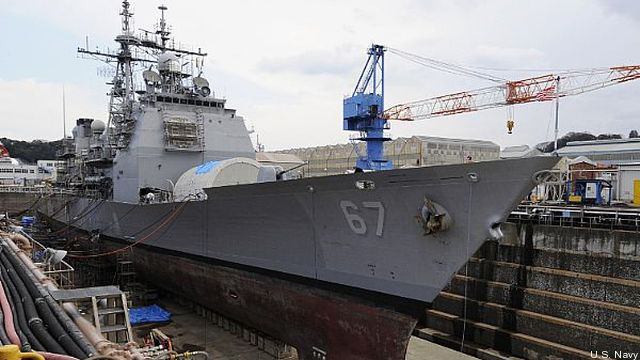 UPDATED WASHINGTON: The Navy could abandon its long-standing goal for a 313-ship fleet in its new force structure plan to meet the needs of the White House’s new national security strategy.
UPDATED WASHINGTON: The Navy could abandon its long-standing goal for a 313-ship fleet in its new force structure plan to meet the needs of the White House’s new national security strategy.
Navy leaders are in the midst of drafting a new force structure assessment, according Vice Chief of Naval Operations Adm. Mark Ferguson. That new assessment will bring the Navy in line with the goals laid out in the White House’s new national security strategy unveiled last week.
But it will likely change the Navy’s long-standing goal of a 313-ship fleet, he said said during today’s speech at the Surface Navy Association’s annual conference in Arlington. That 313-ship goal was based on the national security priorities set by the 2006 Quadrennial Defense Review. With the change in focus from that QDR to the new plan set by the Obama administration, the Navy “will have to re-look” the feasibility of fielding a 313-ship fleet, according to Ferguson. “I think all of us recognize that under those [2006] assumptions and that financial picture that was a great force structure to do what was needed,” he said of the 313-ship goal. “We are going to go back and take a look and see what direction that is [now].”
Ferguson’s comments come as the Navy and the rest of the Pentagon begin to shift their focus from Southwest Asia to the Western Pacific. With total ground forces expected to drop over the next decade, the Navy and Air Force will bear the brunt of that new Pacific campaign. The Navy will take on that mission with a “smaller and leaner” force, Ferguson said. That said, service leaders are taking steps to make sure that smaller fleet is as effective as possible.
The Navy’s warfighting directorates will get more control over what warships and weapons they buy in the future as part of a overall effort to revamp the service’s procurement process. With less ships expected to enter the fleet, Navy leaders want to make sure what they buy will meet their needs now and in the future. This acquisition overhaul is geared to do just that.
The new reorganization proposal is currently being worked by top Navy leaders inside the Pentagon, according to Ferguson. Service directorates for areas including surface warfare, submarines, aviation and expeditionary warfare will now be responsible for key acquisition decisions on which new systems make it into their portfolios, Ferguson said during his speech today at the Surface Navy Association’s annual conference. As part of that plan, directorate chiefs will be forced to consider all the factors — from initial procurement to training and long-term sustainment — that go into a big-ticket acquisition program. A new three-star position will be created to make sure all those factors are integrated properly into a given weapons program, the four-star admiral noted. Navy leaders hope to have the new acquisition strategy in place by fiscal 2015, he said.
Multi-ship amphib buy could net $900M in savings, say Navy, Marine Corps officials
Lawmakers gave the Navy authorities to ink a multi-ship amphib deal years ago, but the service has not utilized that power yet.


























